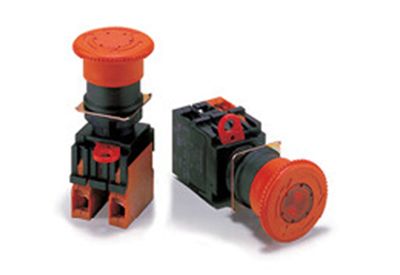How to choose the appropriate E-stop technology for your application

February 10, 2020
There are strict guidelines concerning the compliance of emergency stop pushbuttons, the bulk of which are focused on making the button easy to access and press. However, there are certain applications in which even a standards-compliant pushbutton may not be the ideal solution. These applications can usually be improved with a technology known as a rope switch.
Compliance requirements for E-stop pushbuttons
In the vast majority of applications, a pushbutton will suffice. An emergency stop pushbutton must be colored red and must be mounted upon a bright yellow background. The yellow background must be a minimum of 3mm beyond the mounting collar and visible beyond the control actuator according to ANSI B65.1-2005.
The actuator of a pushbutton-operated device is required to have a mushroom-head shape. Flush or membrane-style switches are not permitted, and neither are graphical representations of a button on an HMI or flat panel display. While the coloring is designed to ensure that it can be easily located, the purpose of the mushroom-head shape is to make it easy to push.
E-stop pushbuttons need to be located at each operator control station and at any other location where an emergency stop would be required. The buttons must be self-latching, meaning that they can only be reset manually. They also need to have direct opening operation. As with all E-stop devices, a pushbutton must remain unguarded.
When to use rope switches as an alternative to pushbuttons
In applications that involve several operators working alongside a conveyor, it might not work well to have multiple E-stop pushbuttons at each work site. Instead, the most workable solution might be a rope switch, which is a cord of braided plastic-coated wire that’s installed horizontally across the points of hazard generated by rotating machinery and conveyor motion.
A rope switch can cover the entire machine, and anyone at any spot on the conveyor can pull it. When pulled, it causes the attached switch to generate an emergency stop. For operators working in environments with explosives and similar hazards, rope switches are often the best choice, as these promote a stronger and more robust enclosure.
















